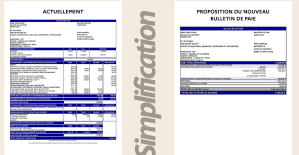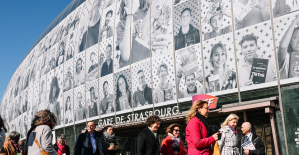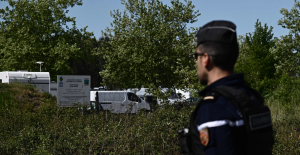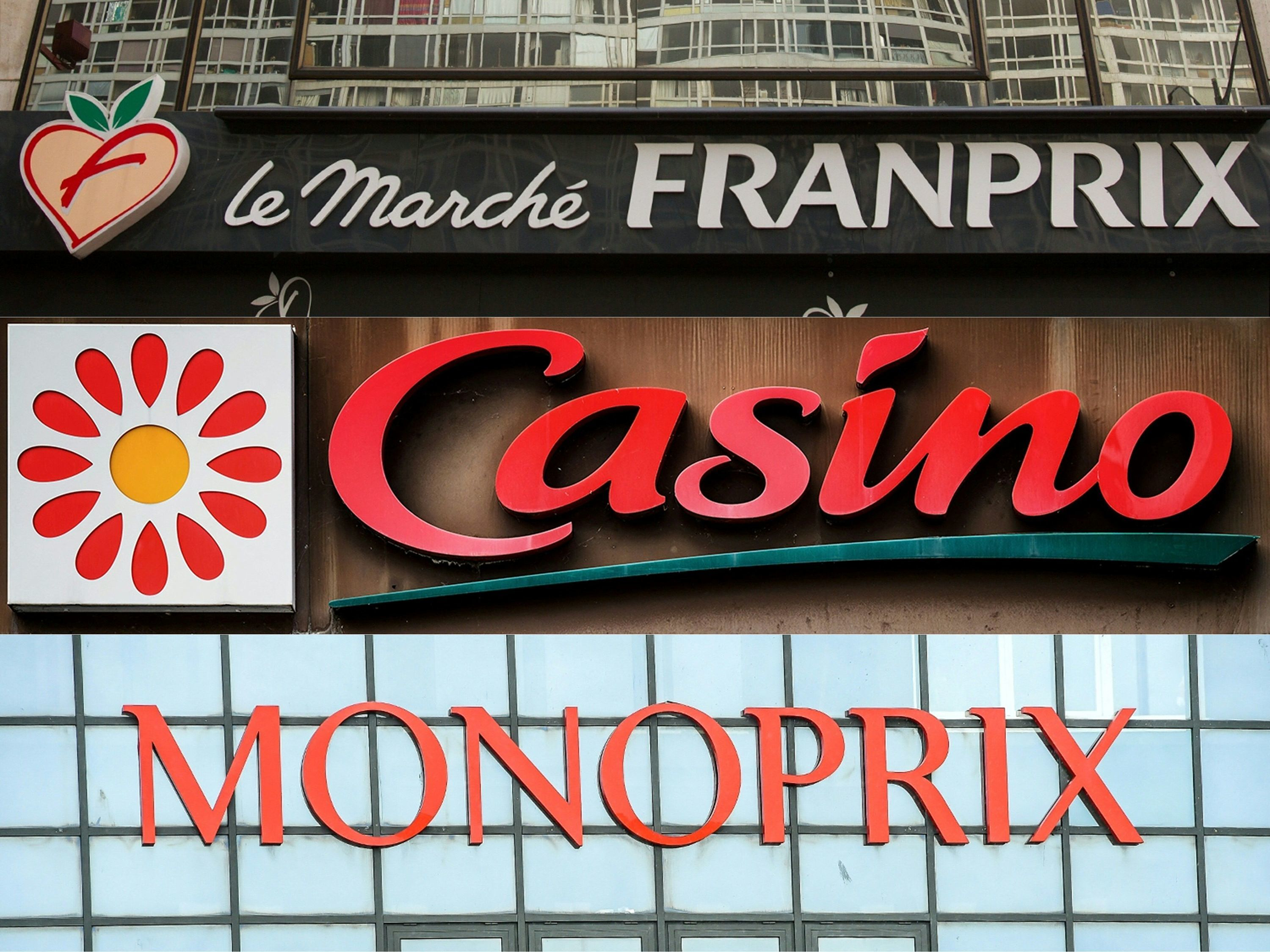At the end of 1938, the Berlin scientists Otto Hahn and Fritz Straßmann succeeded in splitting a uranium nucleus in the laboratory. Shortly thereafter, Lise Meitner gave a theoretical explanation of the phenomena observed. As a result, nuclear physicists all over the world knew that nuclear fission contained a new, enormous energy potential that could be used for peaceful purposes such as generating electricity and heat - but also for military purposes in the form of an atomic bomb.
Several Jewish physicists who had fled Europe feared that the National Socialists could also take advantage of these opportunities. So they persuaded Nobel laureate Albert Einstein to write a letter to Franklin D. Roosevelt asking him to start a US nuclear program. The US President followed the recommendation and started a project in top secret, which was eventually given the code name "Manhattan Project" and led to the construction of the first two functional atomic bombs.
The warning was not unjustified, because at the same time a group of highly qualified nuclear physicists gathered around the Nobel Prize winner Werner Heisenberg in Germany. Together they wanted to explore possible uses of nuclear fission, including a "uranium machine", i.e. a nuclear reactor. But the possibility of a uranium bomb was also discussed.
This means that two research groups are working in parallel on the possibility of a superbomb. In the USA they got all the support from the state, while Hitler allowed the various working groups of the Uranium Association to keep to a rather limited extent. Physicists in the USA soon overtook their German competitors, mainly thanks to their two most important minds, J. Robert Oppenheimer and Enrico Fermi.
But Heisenberg did not give up, even if after 1945 he claimed to have taken a restraining stance. In the summer of 1942, he explained to Albert Speer, the newly installed Minister of Armaments, that a uranium bomb that could destroy an entire city was only "the size of a pineapple". It is not clear whether he said this in order to be able to maintain his working group or because he actually wanted to build such a weapon.
From 1943 onwards, German nuclear physicists lagged hopelessly behind the American "Manhattan Project". This also had to do with successful Allied air raids on resources in German-occupied Europe, such as a heavy water factory in Norway.
At the beginning of 1945, the Germans moved their experimental reactor to Haigerloch in Swabia out of concern for the advancing Soviets. But even here they did not succeed in controlling nuclear fission, which Enrico Fermi had already achieved in Chicago at the end of 1942. Basically, the scientists of the Uranium Society calculated with wrong numbers, so they had no theoretical idea of how a nuclear weapon works.
When US soldiers marched into south-west Germany in April 1945, the physicists quickly removed all traces of their work. They were nevertheless arrested by an Allied special unit and taken to a special camp in England, at Farm Hall, where they were bugged.
The transcripts of their conversations show that they had no insight into the practical problems of developing nuclear weapons - and therefore the scientists of the "Manhattan Project" could not benefit from them either.
This article was first published in 2012.

 His body naturally produces alcohol, he is acquitted after a drunk driving conviction
His body naturally produces alcohol, he is acquitted after a drunk driving conviction Who is David Pecker, the first key witness in Donald Trump's trial?
Who is David Pecker, the first key witness in Donald Trump's trial? What does the law on the expulsion of migrants to Rwanda adopted by the British Parliament contain?
What does the law on the expulsion of migrants to Rwanda adopted by the British Parliament contain? The shadow of Chinese espionage hangs over Westminster
The shadow of Chinese espionage hangs over Westminster Colorectal cancer: what to watch out for in those under 50
Colorectal cancer: what to watch out for in those under 50 H5N1 virus: traces detected in pasteurized milk in the United States
H5N1 virus: traces detected in pasteurized milk in the United States What High Blood Pressure Does to Your Body (And Why It Should Be Treated)
What High Blood Pressure Does to Your Body (And Why It Should Be Treated) Vaccination in France has progressed in 2023, rejoices Public Health France
Vaccination in France has progressed in 2023, rejoices Public Health France The right deplores a “dismal agreement” on the end of careers at the SNCF
The right deplores a “dismal agreement” on the end of careers at the SNCF The United States pushes TikTok towards the exit
The United States pushes TikTok towards the exit Air traffic controllers strike: 75% of flights canceled at Orly on Thursday, 65% at Roissy and Marseille
Air traffic controllers strike: 75% of flights canceled at Orly on Thursday, 65% at Roissy and Marseille This is what your pay slip could look like tomorrow according to Bruno Le Maire
This is what your pay slip could look like tomorrow according to Bruno Le Maire Sky Dome 2123, Challengers, Back to Black... Films to watch or avoid this week
Sky Dome 2123, Challengers, Back to Black... Films to watch or avoid this week The standoff between the organizers of Vieilles Charrues and the elected officials of Carhaix threatens the festival
The standoff between the organizers of Vieilles Charrues and the elected officials of Carhaix threatens the festival Strasbourg inaugurates a year of celebrations and debates as World Book Capital
Strasbourg inaugurates a year of celebrations and debates as World Book Capital Kendji Girac is “out of the woods” after his gunshot wound to the chest
Kendji Girac is “out of the woods” after his gunshot wound to the chest Skoda Kodiaq 2024: a 'beast' plug-in hybrid SUV
Skoda Kodiaq 2024: a 'beast' plug-in hybrid SUV Tesla launches a new Model Y with 600 km of autonomy at a "more accessible price"
Tesla launches a new Model Y with 600 km of autonomy at a "more accessible price" The 10 best-selling cars in March 2024 in Spain: sales fall due to Easter
The 10 best-selling cars in March 2024 in Spain: sales fall due to Easter A private jet company buys more than 100 flying cars
A private jet company buys more than 100 flying cars This is how housing prices have changed in Spain in the last decade
This is how housing prices have changed in Spain in the last decade The home mortgage firm drops 10% in January and interest soars to 3.46%
The home mortgage firm drops 10% in January and interest soars to 3.46% The jewel of the Rocío de Nagüeles urbanization: a dream villa in Marbella
The jewel of the Rocío de Nagüeles urbanization: a dream villa in Marbella Rental prices grow by 7.3% in February: where does it go up and where does it go down?
Rental prices grow by 7.3% in February: where does it go up and where does it go down? Europeans: “All those who claim that we don’t need Europe are liars”, criticizes Bayrou
Europeans: “All those who claim that we don’t need Europe are liars”, criticizes Bayrou With the promise of a “real burst of authority”, Gabriel Attal provokes the ire of the opposition
With the promise of a “real burst of authority”, Gabriel Attal provokes the ire of the opposition Europeans: the schedule of debates to follow between now and June 9
Europeans: the schedule of debates to follow between now and June 9 Europeans: “In France, there is a left and there is a right,” assures Bellamy
Europeans: “In France, there is a left and there is a right,” assures Bellamy These French cities that will boycott the World Cup in Qatar
These French cities that will boycott the World Cup in Qatar NBA: the Wolves escape against the Suns, Indiana unfolds and the Clippers defeated
NBA: the Wolves escape against the Suns, Indiana unfolds and the Clippers defeated Real Madrid: what position will Mbappé play? The answer is known
Real Madrid: what position will Mbappé play? The answer is known Cycling: Quintana will appear at the Giro
Cycling: Quintana will appear at the Giro Premier League: “The team has given up”, notes Mauricio Pochettino after Arsenal’s card
Premier League: “The team has given up”, notes Mauricio Pochettino after Arsenal’s card


















